

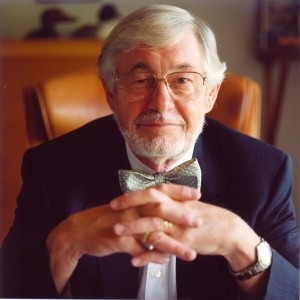 In the 1990s, P.I. Bränemark (Sweden) started using the bone that forms the cheek as a anchoring point for (zygomatic) dental implants. In the year 2003-2004, documentation and data were published showing success rates with Zygomatic Implants that were as good as with conventional implants.
In the 1990s, P.I. Bränemark (Sweden) started using the bone that forms the cheek as a anchoring point for (zygomatic) dental implants. In the year 2003-2004, documentation and data were published showing success rates with Zygomatic Implants that were as good as with conventional implants.
The technique of Zygomatic Implants has been developed over the last twenty years, and, as such, those implants are not really a point of debate. They do not rely on the alveolar jaw bone anchorage, as do conventional implants, but rely solely on the zygoma achorage. Those implants are much longer (in a range from 3.5 to 5 cm) than conventional implants (0.7 to 1.5 cm).
The zygomatic bone is an excellent quality bone with sufficient bony volume in virtually all patients. In each zygoma there is enough space and volume to place one or two implants. When those implants are connected to a fixed dental bridge work they are conceived to withstand normal chewing forces.
Zygomatic implants are reserved for patients with an explicit lack of upper jaw bone in the rear areas and where bone grafting is not immediately an option. Older patients are good indications, since no bone grafts are necessary and the fitting supra-structure (i.e. teeth) can be made for immediate loading (i.e. from a practical point of view, two days after implantation, with an aesthetic pass and trial included).
With zygomatic implants patients have teeth in a couple of days, whereas if implants have to be placed into the graft approach it takes about four to eight months to finalise the extended bridge.
Most often, one zygomatic implant on each side can be combined with regular implants in the front region.
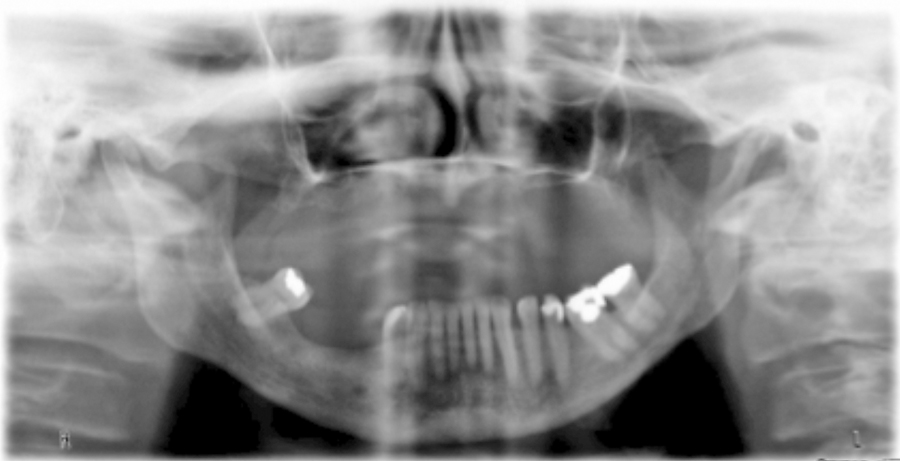
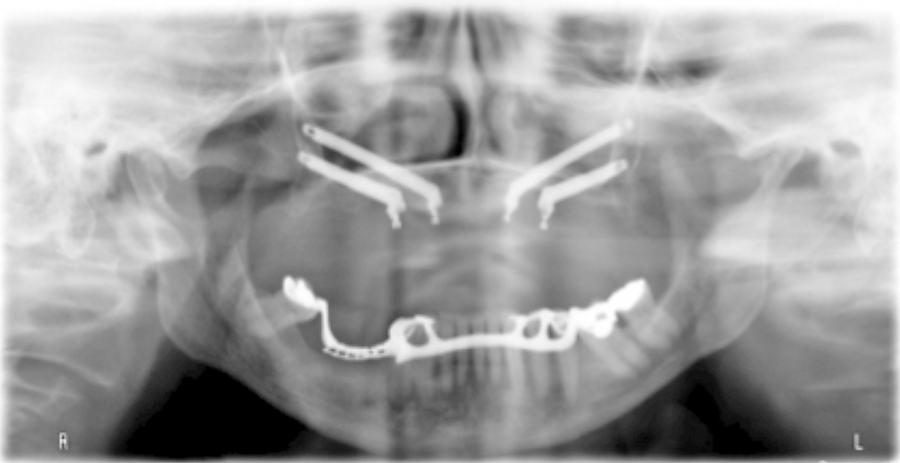
Bone grafting is a technique that has various limitations:
COMPARISON TABLE BETWEEN BONE GRAFT AND ZYGOMATIC IMPLANTS
| AUTOLOGOUS BONE GRAFT | ZYGOMATIC IMPLANTS | ||
| NUMBER OF SURGERIES | 2 | 1 | |
| MOBILE PROTHESIS | 10 MONTHS | UNNECESSARY | |
| FIXED TEETH | ADTER 12 MONTHS | AFTER 24 HOURS | |
| DURATION OF THERAPY | 12 MONTHS | 6 MONTHS | |
| POST-SURGERY DISCOMFORT | HIGH | LOW | |
| SUCCESS RATE | 60-80% | 98% | |
| COSTS | COMPARABLE | ||
Before the operation, an extended i-cat is taken, enabling us to study the bone structures, especially the zygoma bones in a three dimensional way. Zygomatic implants are placed in one surgical procedure under endovenous sedation or general anarsthesia.
The zygomatic implant can be located inside, outside, or within the bony wall of the outer part of the upper jaw sinus.
This housing is dictated exclusively by both ends of the implant:
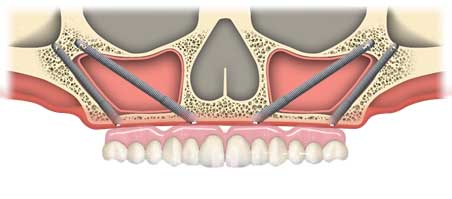
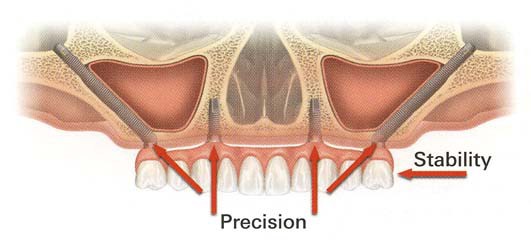
1. Vrielinck L, Politis C, Schepers S, Pauwels M, Naert I. Image-based planning and clinical validation of the zygoma and pterygoid implant placement in patients with severe bone atrophy using customized drill guides. Preliminary results from a prospective clinical follow-up study. Int J Oral Maxillofac Surg 2003;32:7-14.
2. Parel SM, Branemark PI, Ohrnell LO, Svensson B. Remote implant anchorage for rehabititation of maxillary defects. J Prosthet Dent 2001;86:377-81.
3. Stevenson AR, Austin BW. Zygomaticus fixtures: the Sidney experience. Ann R Australas Coll Dent Surg 2000;15:337-9.
4. Branemark P-I. Surgery and fixture installation. Zygomaticus fixture clinical procedures (ed 1). Goteborg, Sweden: Nobel Biocare AB; 1998. p. 1.
5. Widmark G, Andersson B, Carlsson GE, Linvall AM, Ivanoff CJ. Rehabilitation of patients with severely resorbed maxillae by means of implants with or without bone grafts: a 3 to 5-year follow-up clinical report. Int J Oral Maxillofac Implants 2001;16:73-9.
6. Bedrossian E, Stumpel III L. Immediate stabilization at stage II of zygomatic implants: rationale and technique. J Prosthet Dent 2001;86:10-4.
7. Boyes-Varley J, Howes D, Lownie J, Blackbeard G. Surgical modifications to the Branemark zygomaticus protocol in the treatment of the severely resorbed maxilla: a clinical report. J Oral Maxillofac Implants 2003;18:232-7.
8. Weischer T, Schettler D, Mohr C. Titanium implants in the zygoma as retaining elements after hemimaxillectomy. Int J Oral Maxillofac Implants 1997;12:211-4.
9. Tamura H, Sasaki K, Watahiki R. Primary insertion of implants in the zygomatic bone following subtotal maxillectomy. Bull Tokyo Dent Coll 2000;41:21-4.
10. Aparicio C, Branemark P-I, Keller EE, Olive J. Reconstruction of the premaxila with autogenous iliac bone in combination with osseointegrated. Int J Oral maxillofac Implants 1993;8:61-7.
11. Uchida Y, Goto M, Katsuki T, Akiyoshi T. Measurement of the maxilla and zygoma as an aid in installing zygomatic implants. J Oral Maxillofac Surg 2001;59:1193-8.
12. Nkenke E, Hahn M, Lell M, Wiltfang J, Schultze-Mosgau S, Stech B, et al. Anatomic site evaluation of the zygomatic bone for dental implant placement. Clin Oral Impl Res 2003;14:72-9.
13. Kato Y, Kizu Y, Tonogi M, Ide Y, Yamane G. Internal structure of zygomatic bone related to zygomatic fixture. J Oral Maxillofac Surg 2005;63:1325-9.
14. Balshi TJ, Wolfinger GJ. Treatment of congenital ectodermal dysplasia with zygomatic implants: a case report. Int J Oral Maxillofac Implants 2002;17:277-81.
15. Peñarrocha M, Uribe R, Rambla J, Guarinos J. Fixed rehabilitation of a patient with hypohidrotic ectodermal using zygomatic implants. Oral Surg Oral Med Oral Pathol Oral Radiol Oral Endod 2004;98:161-5.
16. Schmidt BL, Pogrel MA, Young CW, Sharma A. Reconstruction of extensive maxillary defects using zygomaticus implants. J Oral Maxillofac Surg 2004;62:82-9.
17. Landes CA. Zygoma implant-supported midfacial prosthetic rehabilitation: a 4-year follow-up study including assessment of quality of life. Clin Oral Implant Res 2005;16:313-25.
18. Pham AV, Abarca M, De Mey A, Malevez C. Rehabilitation of a patient with cleft lip and palate with an extremely edentulous atrophied posterior maxilla using zygomatic implants: case report. Cleft palate Craniofac J 2004;41:571-4.
19. Bowden JR, Flood TR Downie IP. Zygomaticus implants for retention of nasal prostheses after rhinectomy. Br J Oral Maxillofac Surg 2006;44:54-6.
20. Petruson B. Sinuscopy in patients with titanium implants in the nose and sinuses. Scand J Plast Reconstr Surg Hand Surg 2004;38:86-93.
21. Stella J, Warner M. Sinus slot technique for simplification and improved orientation of zygomaticus dental implants: a technical note. Int J Oral Maxillofac Implants 2000;15:889-93.
22. Peñarrocha M, Uribe R, García B, Martí E. Zygomatic implants using the sinus slot technique: clinical report of a patient series. Int J Oral Maxillofac Implants 2005;20:788-92.
23. Salinas T. Implant treatment and the edentulous maxilla. Pract Proced Aesthet Dent 2004;16:247-8.
24. Bothur S, Jonsson G, Sandahl L. Modified technique using multiple zygomatic implants in reconstruction of the atrophic maxilla: a technical note. Int J Oral Maxillofac Implants 2003;18:902-4.
25. Bedrossian E, Stumpel III L, Beckely M, Indersano T. The zygomatic implant: preliminary data on treatment of severely resorbed maxillae. A clinical report. Int J Oral Maxillofac Implants 2002;17:861-5.
26. Branemark PI, Grondahl K, Ohrnell LO, Nilsson P, Petrusson B, Svensson B, et al. Zygoma fixture in the management of advanced atrophy of the maxilla: technique and long-term results. Scand J Plast Reconstr Surg Hand Surg 2004;38:70-85.
27. Malevez C, Abarca M, Durdu F, Daelemans P. Clinical outcome of 103 consecutive zygomatic implants: 6-48 months follow-up study. Clin Oral Impl Res 2004;15:18-22.
28. Hirsch JM, Öhrnell LO, Henry P, Andreason L, Branemark P, Chiapasco M, et al. A clinical evaluation of the zygoma fixture: one-year follow-up at 16 clinics. J Oral Maxillofac Surg 2004;62:22-9.
29. Al-Nawas B, Wegener J, Bender C, Wagner W. Critical soft tissue parameters of the zygomatic implant. J Clin periodontal 2004;31:497-500.
30. Nakai H, Okazaki Y, Ueda M. Clinical application of zygomatic implants for rehabilitation of the severely resorbed maxilla: a clinical report. Int J Oral Maxillofac Implants 2003;18:566-70.
31. Becktor JP, Isaksson S, Abrahamsson P, Sennerby L. Evaluation of 31 zygomatic implants and 74 regular dental implants used in 16 patients for prosthetic reconstruction of the atrophic maxilla with cross-arch fixed bridges. Clin Implant Dent Relat Res 2005;7:159-65.
